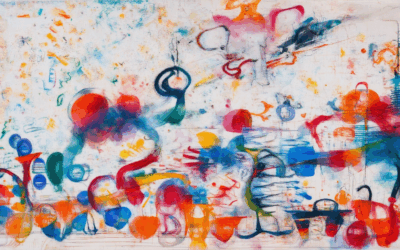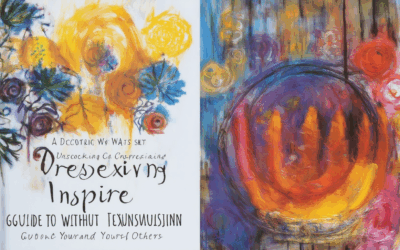The realm of creative writing is a transformative experience where imagination serves as the cornerstone of innovation. For writers seeking to master their craft, understanding and harnessing the power of imagination is essential. This guide explores the intricate relationship between creativity and writing, offering actionable techniques and strategies to unlock your artistic potential. From cultivating a fertile imagination to refining your craft, we delve into the essential tools needed to become a proficient writer. Whether you’re a seasoned author or an aspiring wordsmith, this exploration of imagination in writing will provide valuable insights to elevate your creative process.

What is Imagination in Writing?
Imagination in writing is the ability to create stories, characters, and worlds that transcend the boundaries of reality. It involves the power to visualize scenes, evoke emotions, and craft unique narratives that captivate readers. At its core, imagination allows writers to explore uncharted territories, offering fresh perspectives and innovative ideas that inspire and engage audiences.The essence of imagination in writing lies in its versatility. It enables authors to:1. **Conjure Vivid Images**: Writers use imagination to paint mental pictures, helping readers envision settings, characters, and actions.2. **Evoke Emotions**: Through imaginative storytelling, writers can stir feelings that resonate deeply with readers, creating emotional connections.3. **Innovate and Transform**: Imagination pushes boundaries, allowing writers to reframe familiar concepts in unexpected ways, leading to groundbreaking stories.For instance, a writer might imagine a world where technology and magic coexist, or where animals communicate with humans. These imaginative constructs become the foundation for compelling plots and memorable characters.At Patrick Mettraux, we celebrate the boundless nature of imagination. Our blog is a hub for creative exploration, offering insights into storytelling, artistic reflection, and personal narratives. We believe that imagination is the driving force behind creativity, and we aim to inspire readers to harness their own creative potential.Explore Patrick Mettraux to discover articles that delve into the creative process, featuring thought-provoking perspectives and tips for nurturing your imagination. Whether you’re a seasoned writer or an aspiring creator, our platform offers resources to fuel your artistic journey.
- Patrick Mettraux – Inspire Your Creativity
- Medium – Discover Thought-Provoking Stories
- Substack – Explore Unique Voices
Engage with us on social media to share your thoughts on imagination in writing and connect with a community of like-minded creators. Let your imagination guide your words and let Patrick Mettraux be your partner in creativity.
The 5 Cs of Precis Writing
The 5 Cs of precis writing are essential principles that guide clear, effective, and professional communication. These criteria ensure that your writing is not only understandable but also polished and impactful.
- Clarity : Make your message easily understood. Break down complex ideas into simple, digestible parts. Ensure your audience can grasp your meaning without confusion.
- Conciseness : Be direct and avoid unnecessary words. Your writing should convey the most important information with the fewest words possible.
- Courtesy : Show respect and consideration for your reader. Address them appropriately and maintain a polite tone throughout your writing.
- Correctness : Ensure accuracy in your facts, grammar, and spelling. Precision is key to maintaining credibility.
- Consistency : Maintain a uniform style and tone. Whether formal or casual, stick to the same approach to create a cohesive piece of work.

How to Teach Imaginative Writing
To effectively teach imaginative writing, it’s essential to guide students through a structured approach that fosters creativity and originality. Here’s a comprehensive method to help teachers and writers alike:
1. Define and Explore Imaginative Writing
Imaginative writing goes beyond traditional storytelling. Encourage students to push boundaries and explore unique perspectives. Define imaginative writing as the art of crafting stories that transcend reality, blending emotion, symbolism, and innovation.
2. Techniques for Sparking Creativity
– **Visualization**: Instruct students to close their eyes and imagine vivid scenes. Describe these visuals in detail to bring them to life on the page.- **Symbolism**: Teach the use of symbols to convey deeper meanings. For example, a broken mirror might represent shattered perceptions or emotional turmoil.- **Metaphors and Similes**: Encourage creative comparisons, such as describing a storm as a rumbling pot of emotions.
3. The Role of Themes and Symbols
Help students identify central themes in their stories and incorporate meaningful symbols to reinforce these ideas. For instance, a journey theme might use a compass as a symbolic tool.
4. Character Development
Guide students in creating multi-dimensional characters. Encourage them to give characters flaws, secrets, and motivations that drive the narrative forward. Example: A character who fears change might struggle with unexpected circumstances.
5. Exploring Settings
– **Detailed World-Building**: Encourage students to create intricate settings that become characters themselves. A city with living streets or a forest with hidden paths adds depth.- **Time and Space Manipulation**: Allow students to play with time (e.g., time travel) or space (e.g., parallel universes) to add complexity.
6. Incorporating Sensory Details
Teach students to engage all senses. Describe sounds, smells, textures, tastes, and sights to immerse readers in the story. Example: A garden with the scent of lavender and the sound of chirping crickets.
7. Experimentation and Risk-Taking
Encourage students to take creative risks. Write from different perspectives, experiment with unusual structures, and explore unconventional themes. Fear of failure often stifles creativity, so emphasize the importance of embracing imperfection.
8. Feedback and Revision
– **Constructive Criticism**: Provide feedback that balances strengths and areas for growth. Offer specific suggestions rather than vague praise.- **Revision Process**: Stress the importance of revisiting drafts. Help students refine their work by asking probing questions and encouraging them to explore new angles.
9. Reading and Analyzing Great Works
Expose students to renowned imaginative writers like Neil Gaiman, Salman Rushdie, or Ursula K. Le Guin. Analyze their techniques and how they weave magic into their narratives. Study how they handle dialogue, pacing, and plot twists.
10. Practice and Application
– **Daily Writing Exercises**: Assign short exercises, such as writing a scene from a character’s point of view or creating a dialogue between two imaginary figures.- **Creative Challenges**: Set challenges like writing a story in one sitting or experimenting with a new genre.By guiding students through these steps, you can help them develop a strong foundation in imaginative writing. Remember, the goal is to inspire curiosity and confidence in their ability to craft compelling, original stories.
Exploring Your Imagination
Imagination is a powerful tool that allows us to see beyond the ordinary and create new possibilities. Here are some effective ways to explore and nurture your imagination:
- Engage in Creative Practices: Dedicate time to activities that stimulate your creativity. Journaling, mind mapping, or simply sitting in silence can help unlock your imaginative potential.
- Explore New Experiences: Step out of your comfort zone and expose yourself to new environments, cultures, or ideas. This broadens your perspective and fuels creativity.
- Play and Experiment: Whether it’s through art, music, or problem-solving, playfulness encourages innovation. Don’t hesitate to try new things and embrace failure as part of the learning process.
- Connect with Nature: Spending time outdoors can rejuvenate your senses and inspire fresh thinking. Observe the world around you and draw parallels to your own experiences.
- Learn from Others: Study the works of creative individuals who inspire you. Their techniques and approaches can provide valuable insights into how they explored their imagination.
- Use Tools and Resources: Leverage creative tools like digital software, sketchbooks, or online platforms designed to foster creativity. These resources can act as catalysts for your imaginative journey.
- Stay Curious and Open-Minded: Approach life with curiosity and remain open to new ideas. This mindset allows your imagination to thrive and evolve over time.
Remember, imagination is a muscle that grows with use. The more you exercise it, the stronger and more vivid your creative abilities become. Explore, experiment, and enjoy the journey of discovering your own unique imaginative potential.
For more inspiration and creative insights, visit Patrick Mettraux , a platform dedicated to fostering creativity and imagination through storytelling and artistic reflection.
How to Unlock Your Imagination
Imagination is the spark that ignites creativity, allowing us to see possibilities beyond the ordinary. While it may seem elusive, unlocking your imagination is a skill that can be cultivated with practice and intention. Here’s how you can unlock your imagination and harness its power:
- Embrace Curiosity and Wonder
- Practice Mindfulness
- Engage in Creative Exercises
- Explore New Experiences
- Collaborate and Share Ideas
- Set Aside Time for Creativity
- Stay Curious About the World
- Be Open to Playfulness
- Seek Inspiration from Others
- Stay Persistent and Patient
Curiosity is the gateway to imagination. Ask questions, explore unfamiliar topics, and let your mind wander. By embracing wonder, you open yourself up to new ideas and perspectives.
Mindfulness helps quiet the chatter of daily life, allowing your mind to become still and receptive. Take a few moments each day to meditate or simply sit in silence, observing your thoughts without judgment. This practice fosters a mindset conducive to creativity.
Experiment with creative exercises like journaling, mind mapping, or free-writing. These activities provide a structured way to explore ideas and tap into your imaginative potential. For example, set a timer and write down 50 ideas in 15 minutes—this forces your mind to think creatively without overthinking.
Step out of your comfort zone and expose yourself to new experiences. Whether it’s trying a new hobby, visiting an unfamiliar place, or interacting with diverse people, each experience broadens your perspective and fuels your imagination.
Discuss your thoughts with others. Sharing ideas can spark new connections and inspire fresh perspectives. Collaborating with like-minded individuals can also create a supportive environment for creativity to flourish.
Make time for creativity every day. Even 10–15 minutes can make a difference. Dedicate a specific space or time for brainstorming, and allow yourself to explore ideas without judgment.
Keep learning and exploring. The more you know, the more you have to draw from, which enriches your imagination. Read widely, watch documentaries, and engage with diverse media to feed your creative well.
Playfulness is a great catalyst for imagination. Allow yourself to laugh, play games, and enjoy the process of creation. Remember, creativity is about joy and discovery.
Look to others’ work for inspiration, but don’t copy. Use their ideas as a jumping-off point to create something unique. Visit Patrick Mettraux for innovative insights and creative inspiration.
Unlocking imagination takes time. Don’t get discouraged by initial difficulties. Keep experimenting, exploring, and pushing boundaries. Over time, you’ll notice your creativity becoming more fluid and intuitive.

Exploring Creativity
To explore your creativity effectively, consider the following organized approach:1. **Set Aside Dedicated Time**: Schedule regular intervals specifically for creative activities. Consistency helps develop habits and fosters innovation.2. **Embrace Failure as Feedback**: Understand that creativity often leads to trial and error. View mistakes as opportunities to learn and grow.3. **Explore New Perspectives**: Engage with diverse media, such as art, music, or literature, to broaden your cognitive horizons.4. **Collaborate with Others**: Collaborative projects can spark fresh ideas and push your boundaries.5. **Experiment Freely**: Don’t fear failure; instead, experiment with various techniques and styles.6. **Document Your Journey**: Keep a journal or portfolio to track your progress and reflect on your growth.7. **Seek Inspiration**: Explore nature, culture, and history for ideas that can ignite your creativity.8. **Stay Curious**: Approach problems and challenges with curiosity to uncover innovative solutions.9. **Reflect Regularly**: Take time to analyze your work and identify areas for improvement.10. **Push Boundaries**: Challenge yourself to explore uncharted territories and take creative risks.By consistently applying these strategies, you can unlock your full potential and discover new ways to express yourself. Remember, creativity is a journey, and every step forward is a victory.
Explore Creative Writing Tips or visit our Artistic Expression section for more inspiration.




0 Comments